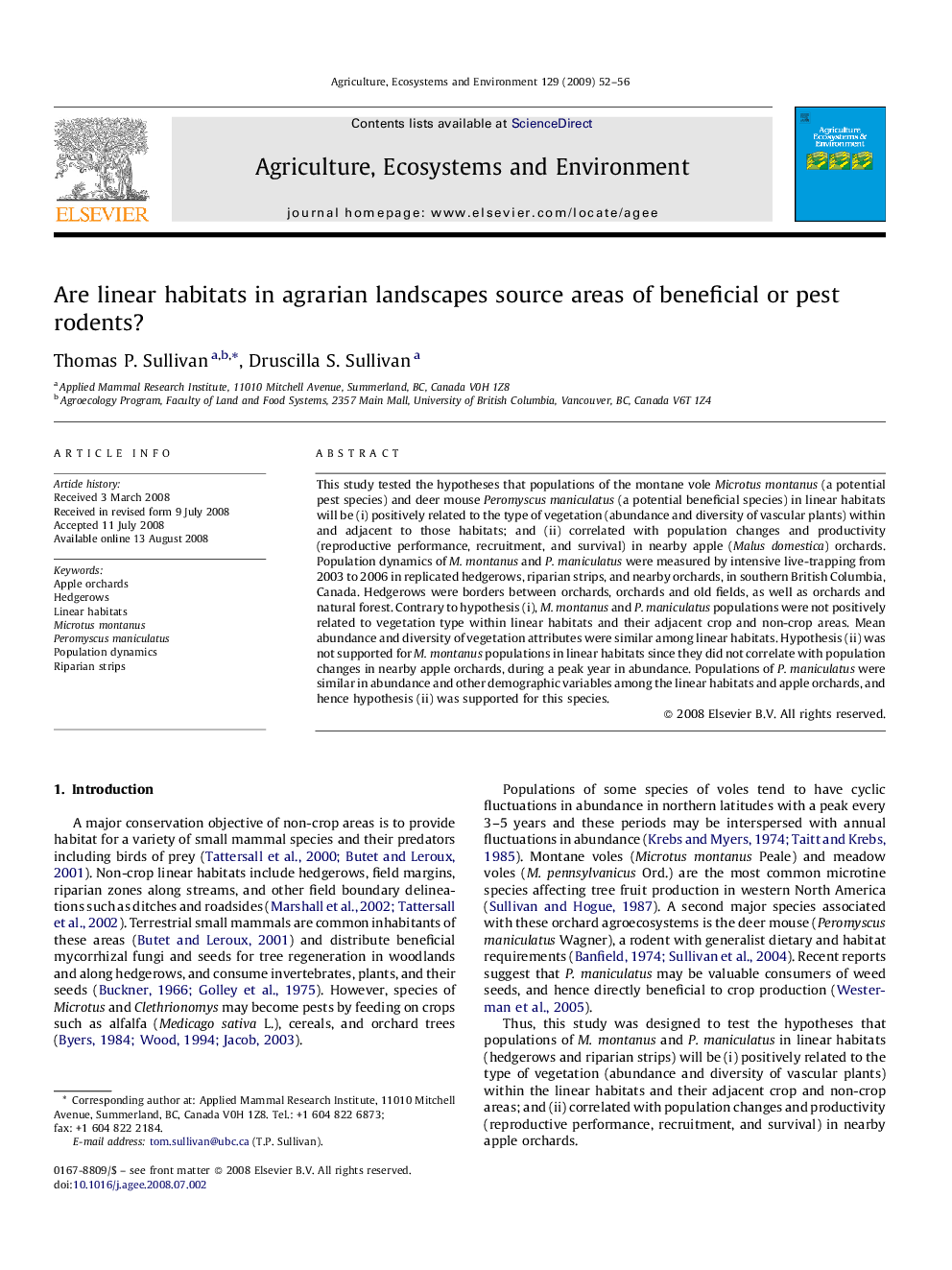| Article ID | Journal | Published Year | Pages | File Type |
|---|---|---|---|---|
| 2415297 | Agriculture, Ecosystems & Environment | 2009 | 5 Pages |
This study tested the hypotheses that populations of the montane vole Microtus montanus (a potential pest species) and deer mouse Peromyscus maniculatus (a potential beneficial species) in linear habitats will be (i) positively related to the type of vegetation (abundance and diversity of vascular plants) within and adjacent to those habitats; and (ii) correlated with population changes and productivity (reproductive performance, recruitment, and survival) in nearby apple (Malus domestica) orchards. Population dynamics of M. montanus and P. maniculatus were measured by intensive live-trapping from 2003 to 2006 in replicated hedgerows, riparian strips, and nearby orchards, in southern British Columbia, Canada. Hedgerows were borders between orchards, orchards and old fields, as well as orchards and natural forest. Contrary to hypothesis (i), M. montanus and P. maniculatus populations were not positively related to vegetation type within linear habitats and their adjacent crop and non-crop areas. Mean abundance and diversity of vegetation attributes were similar among linear habitats. Hypothesis (ii) was not supported for M. montanus populations in linear habitats since they did not correlate with population changes in nearby apple orchards, during a peak year in abundance. Populations of P. maniculatus were similar in abundance and other demographic variables among the linear habitats and apple orchards, and hence hypothesis (ii) was supported for this species.
